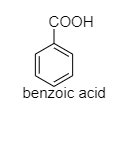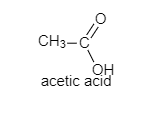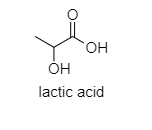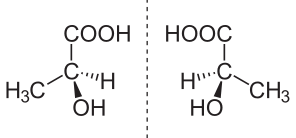
Optical isomerism is shown by:
a.) Oxalic acid
b.) Benzoic acid
c.) Acetic acid
d.) Lactic acid
Answer
592.8k+ views
Hint: Optical isomers are molecules that differ from each other in their behavior towards plane-polarized light. They have different three-dimensional arrangements of the same atoms/groups in a molecule.
Complete step-by-step answer:
Chiral carbon: The carbon atom which has four different groups attached to it are called chiral carbons.
A chiral molecule is non-superimposable on its mirror image.
The following are the structures of given compounds;




As we can see here that oxalic acid, benzoic acid, and acetic acid are achiral. It means, they do not have four different groups attached to the carbon while Lactic acid contains a chiral carbon as it has four different groups attached to it. In lactic acid, there is one asymmetric carbon atom. It also does not contain any element of symmetry.
Symmetry elements:- It is a line, point, or plane through an object about which rotation or reflection occurs.
Hence, lactic acid is optically active while others are optically inactive.
Additional information:
Enantiomers: It is defined as the stereoisomers of a compound which are related to each other as non-superimposable mirror images. They possess identical physical properties like melting point, boiling point solubility, refractive index, etc.
One of the enantiomers rotates the plane of polarization to the left is called laevorotatory while the other one rotates the plane of polarization to the right is called dextrorotatory.
Thus, the number of enantiomers in lactic acid = ${ 2 }^{ n }{ =2 }^{ 1 }$
Where n = number of the chiral carbon
So, there are two enantiomers of lactic acid.

Note: The possibility for the mistake is that you can choose option A. But in oxalic acid, two carbonyl groups are present which make them achiral.
Complete step-by-step answer:
Chiral carbon: The carbon atom which has four different groups attached to it are called chiral carbons.
A chiral molecule is non-superimposable on its mirror image.
The following are the structures of given compounds;




As we can see here that oxalic acid, benzoic acid, and acetic acid are achiral. It means, they do not have four different groups attached to the carbon while Lactic acid contains a chiral carbon as it has four different groups attached to it. In lactic acid, there is one asymmetric carbon atom. It also does not contain any element of symmetry.
Symmetry elements:- It is a line, point, or plane through an object about which rotation or reflection occurs.
Hence, lactic acid is optically active while others are optically inactive.
Additional information:
Enantiomers: It is defined as the stereoisomers of a compound which are related to each other as non-superimposable mirror images. They possess identical physical properties like melting point, boiling point solubility, refractive index, etc.
One of the enantiomers rotates the plane of polarization to the left is called laevorotatory while the other one rotates the plane of polarization to the right is called dextrorotatory.
Thus, the number of enantiomers in lactic acid = ${ 2 }^{ n }{ =2 }^{ 1 }$
Where n = number of the chiral carbon
So, there are two enantiomers of lactic acid.

Note: The possibility for the mistake is that you can choose option A. But in oxalic acid, two carbonyl groups are present which make them achiral.
Recently Updated Pages
Master Class 11 Accountancy: Engaging Questions & Answers for Success

Master Class 11 Science: Engaging Questions & Answers for Success

Master Class 11 Business Studies: Engaging Questions & Answers for Success

Master Class 11 English: Engaging Questions & Answers for Success

Master Class 11 Computer Science: Engaging Questions & Answers for Success

Master Class 9 General Knowledge: Engaging Questions & Answers for Success

Trending doubts
Which are the Top 10 Largest Countries of the World?

Differentiate between insitu conservation and exsitu class 12 biology CBSE

Draw a labelled sketch of the human eye class 12 physics CBSE

State the principle of an ac generator and explain class 12 physics CBSE

Give 10 examples of unisexual and bisexual flowers

Sketch the electric field lines in case of an electric class 12 physics CBSE




